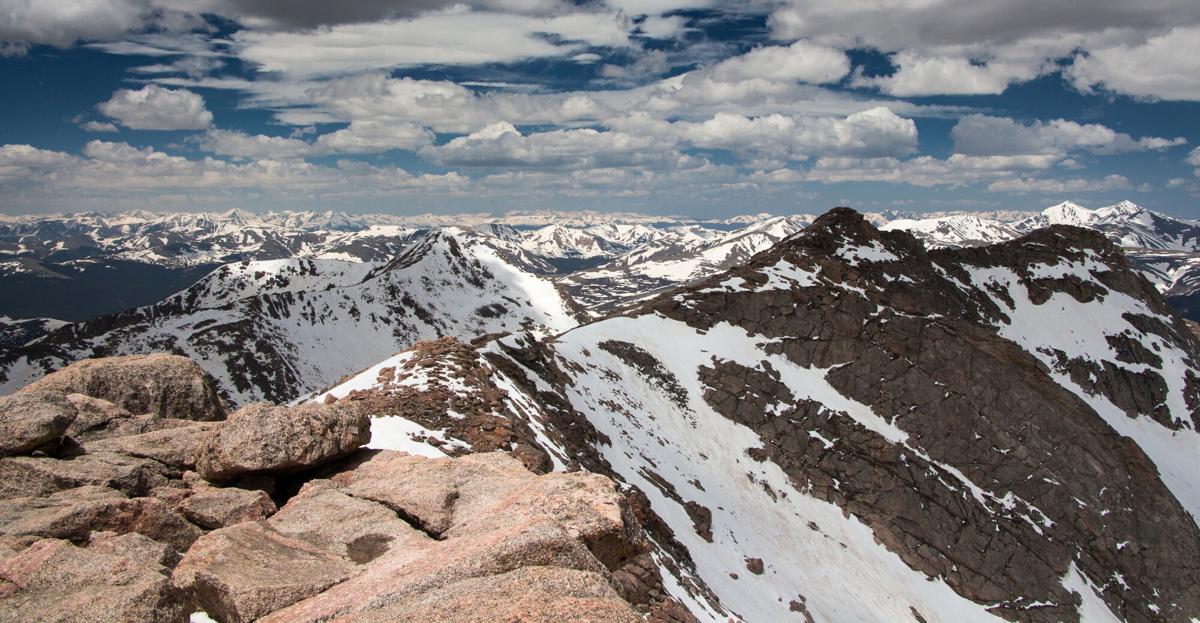What to take on your next Colorado fourteener adventure

TRIBUNE NEWS SERVICE
Having the right gear can help ensure that a fourteener climb is a fun and safe experience.
When traveling extreme terrain, it’s important to be prepared for a range of obstacles and difficulties that might be encountered along the way. Before hitting the trail, use a checklist to verify that all necessary items are in the right place.
Not sure what to bring? Here’s a list to get you started.
• Reliable backpack: A good backpack should hold all necessary gear comfortably for a long distance. Test a weight-loaded backpack for the right fit on a shorter trail prior to taking it above tree line. A backpack with straps that connect across the chest and waist is highly recommended; even better if it’s waterproof.
• Ample water with supplements: It’s suggested that hikers bring roughly a liter of water for every 90 minutes of hiking planned, though some people require more. It’s also smart to pack supplements that can improve hydration, including products such as Nuun tablets and Liquid IV. As far as carrying water, some opt for a bladder-style reservoir while others prefer to drink from a bottle. It’s more convenient to drink through a bladder but perhaps easier to track consumption through a bottle.
• Layers, layers, layers: When climbing fourteeners, hikers experience an extreme change in elevation, which often brings noticeable changes in weather conditions. A single day on a mountain might mean encountering heat, wind, rain, snow and hail. Because of this, it’s important to use layers that can work together to offer comfort in different situations. It’s also important to pack a waterproof layer and spare socks. Always avoid cotton.
• Sunblock: Fourteener trails take hikers above tree line where there’s no protection from the sun. Wear sunblock and apply it frequently. Bring some shades too.
• Quality shoes: Most opt for hiking boots when tackling fourteeners though, for some, trail runners might be more comfortable on the easier class one or class two routes. Regardless, shoes worn on a mountain should be well-tested and broken-in. The shoe also should fit the season, with snow conditions requiring more waterproofing and warmth. Weight and ankle protection are key factors to consider. Find the right balance of durability and comfort while aiming to keep the footwear light.
• Emergency kit: Be prepared for the “just in case.” Aside from helpful medical items such as bandages and antibiotic ointment, other emergency kit items might include a mylar thermal blanket and a whistle.
• Sustenance: It’s important to stay properly nourished while climbing a fourteener — especially with one symptom of altitude sickness being loss of appetite. Many hikers prefer to bring light snacks such as granola, mixed nuts, beef jerky and bananas. Nutritional supplements also can be a good source of energy. Finally, it’s easy to bring a gummy snack for a quick, sugary energy boost.
• GPS system: There are a couple of options — mobile phone GPS or a standalone GPS unit. In many cases, a mobile phone will get the job done, though apps that run these services tend to drain a battery. A stand-alone GPS unit such as Garmin inReach will provide the benefits of a mobile phone GPS with more reliability. It also will allow for communication in places without reliable cell service.
• Toilet paper: Don’t expect to find a bathroom on the mountain and, if there is one, don’t expect it to have toilet paper. Long hikes can require bathroom breaks, and it’s important to be prepared. Do your business at least 200 feet away from water sources and be sure to bury it. Bring a seal-able bag to pack out toilet paper.
• Summit sign: After bagging a fourteener, hikers usually like to mark the feat with a summit photo, often accompanied by a sign displaying the name of the peak and the elevation. Create a sign using waste cardboard and never leave the sign at the summit. As with everything else on the hike — pack it in, pack it out!















